0113 How can a sign-vehicle serve as a symbol and as an icon?
Author Brian Kemple raises the question in Appendix 1.3 of his 2019 book, The Intersection of Semiotics and Phenomenology: Peirce and Heidegger in Dialogue (Walter de Gruyter, Boston/Berlin).
0114 Well, Kemple is not talking about the sign-vehicle for any sign-relation.
He is referring to the sign-vehicle of the intellectual concept.
Or, should I say, “He is referring to the intellectual concept as a sign-vehicle.”?
0115 How would the category-based nested form approach wrestle with these statements?
I proceed by way of example.
I left off with the a sign-relation where the sign-vehicle corresponds to a perspective-level actuality2c, the sign-objectgoes with a content-level actuality2a and the sign-interpretant corresponds to the content-level normal context3a and potential1a.
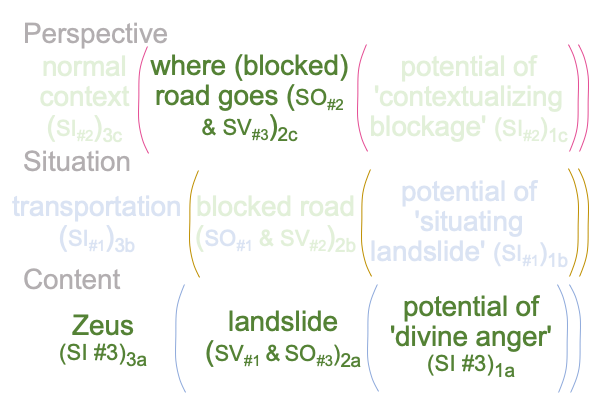
0116 Does the sign-vehicle fit the label, “intellectual concept”?
I suspect that it does. After all, the perspective-level actuality2c offers itself as a sign-object to two sign-relations that span the situation and perspective levels.
0117 Say what?
Recall the examination of appendix 1.2, where the perspective-level actuality2c engages an extrinsic and an intrinsic final interpretant.
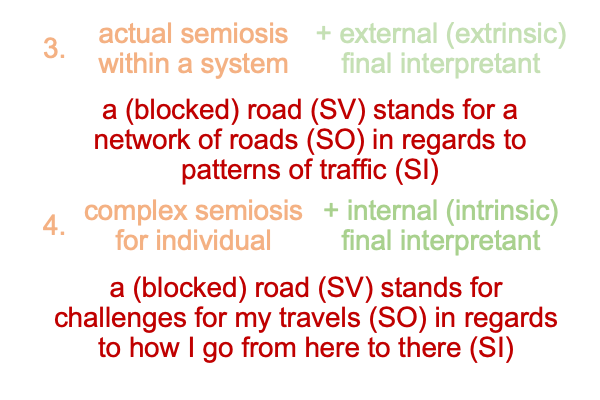
0118 I can isolate the sign-object as an intellectual concept. Surely, a network of roads and the challenges to my travelsare one level beyond situational dynamics. A roadmap and a plan are intellectual concepts.
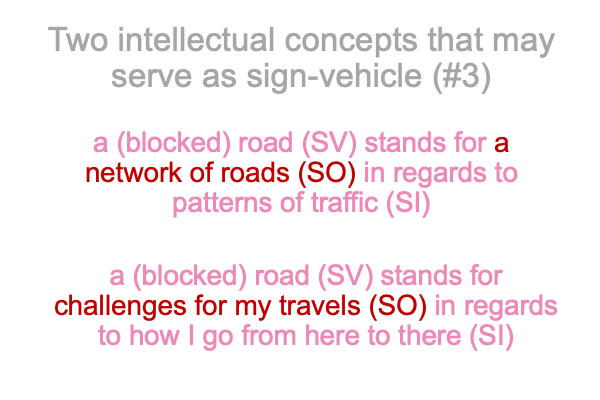
0119 What happens when these two sign-objects contribute to a single sign-vehicle?
Oh, let me read the first line of this examination (point 0113).
0120 The roadmap is like an icon. An icon is a sign-relation whose sign-object is based on the character of firstness… as in… similarity. The roadmap (SV) stands for a network of roads (SO) in regards to the principle of proportion (SI).
Perhaps, it is odd to consider a SO repurposing itself into a SV keying into the same principle of proportion as a roadmap (SI, extrinsic final) as well as into the challenges to travel brought on by the landslide (SI, intrinsic final). So, an act of Zeus contextualizes a principle of proportion (characteristic of maps) as well as a principle of divine retribution(characteristic of how devastating storms challenge travel).
0121 The challenge for my travels reflects the character of symbols. A symbol is a sign-relation whose sign-object is based on the character of thirdness… as in… convention. Surely, the conventional path from my town to other towns relies on the road that is now blocked by a landslide. So, the blocked road becomes a symbol for Zeus’s anger at our particular city. I bet that it has something to do with our new king, Oedipus.
Yes, he solved the riddle of the Sphinx that once made that road so treacherous. But, people are also getting sick and now a landslide blocks the road to medical expertise.
0122 Kemple offers a figure. It is the second figure in the entire book. Here is how I imagine it.
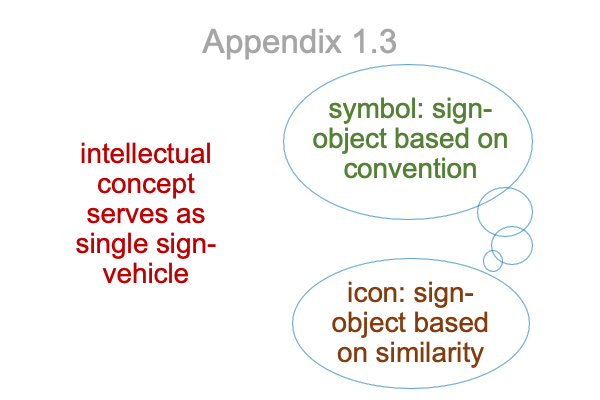
0123 The intellectual concept of where a (blocked) road goes serves as a sign-vehicle that hybridizes map (icon) and divine Zeus’s thunderbolts (symbol). The corresponding sign-object serves as an image even though the sign-interpretant operates as if the sign-object is a symbol.
Here is a picture.
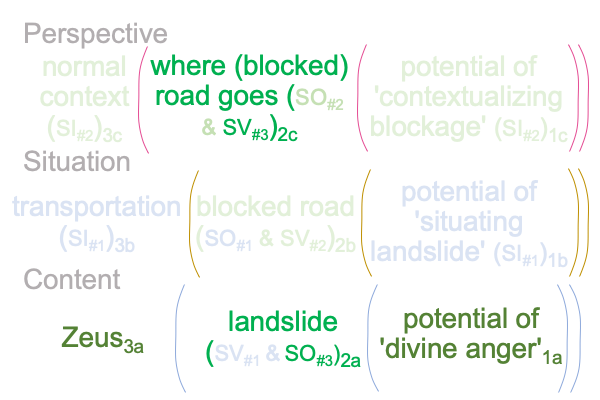
The interventional sign produces a content level that recapitulates the original immediate vehicle, object and interpretant of virtual semiosis.
0124 Here is a comparison.
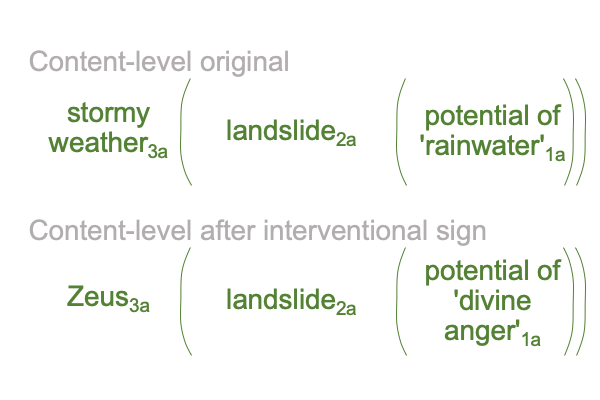
00125 The implications?
Here is one option.
Can a sign-vehicle (a perspective-level actuality2c) generate an imagistic sign-object (a content-level actuality2a) and a symbol-istic sign-interpretant (content-level normal context3a and potential1a)?
Do human conventions generate artifacts for virtual semiosis?
Do cultural artifacts serve as immediate objects?
Consider Comments on Sasha Newell’s Article (2018) “The Affectiveness of Symbols”.
